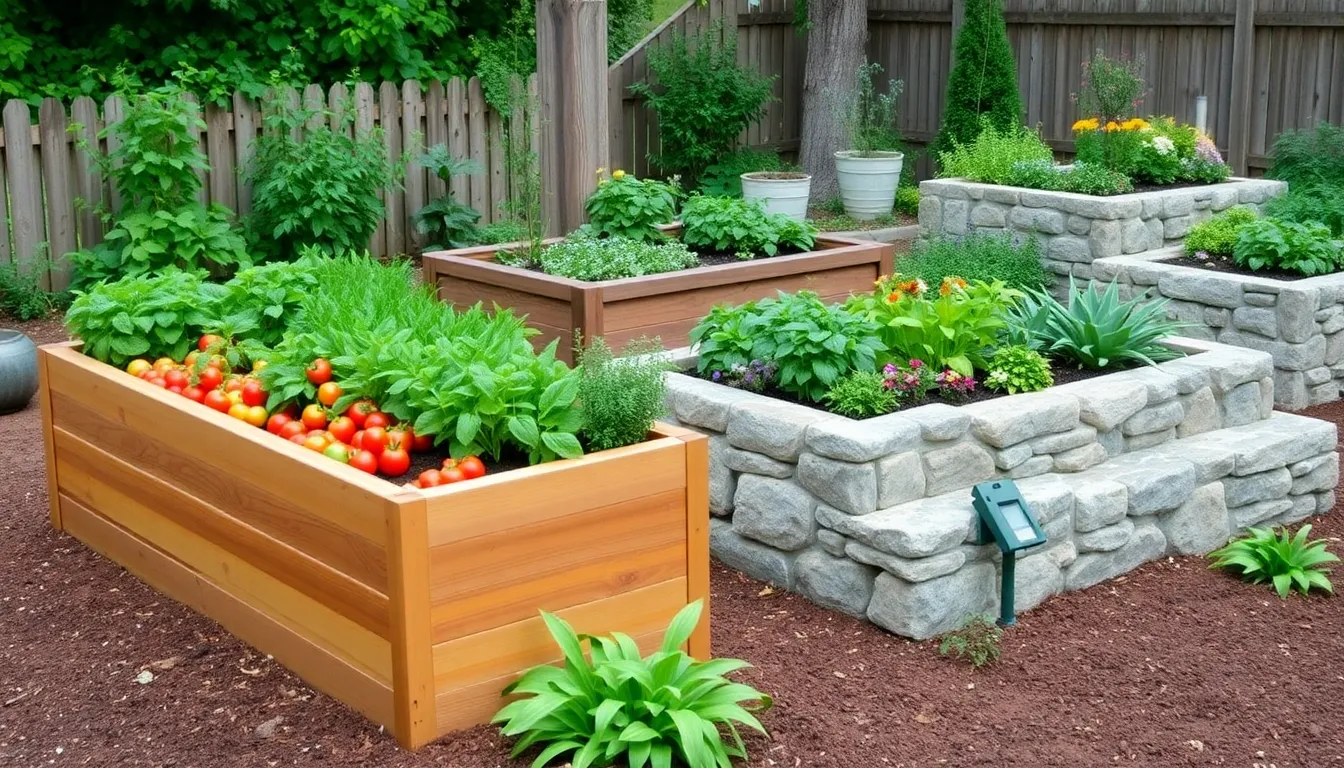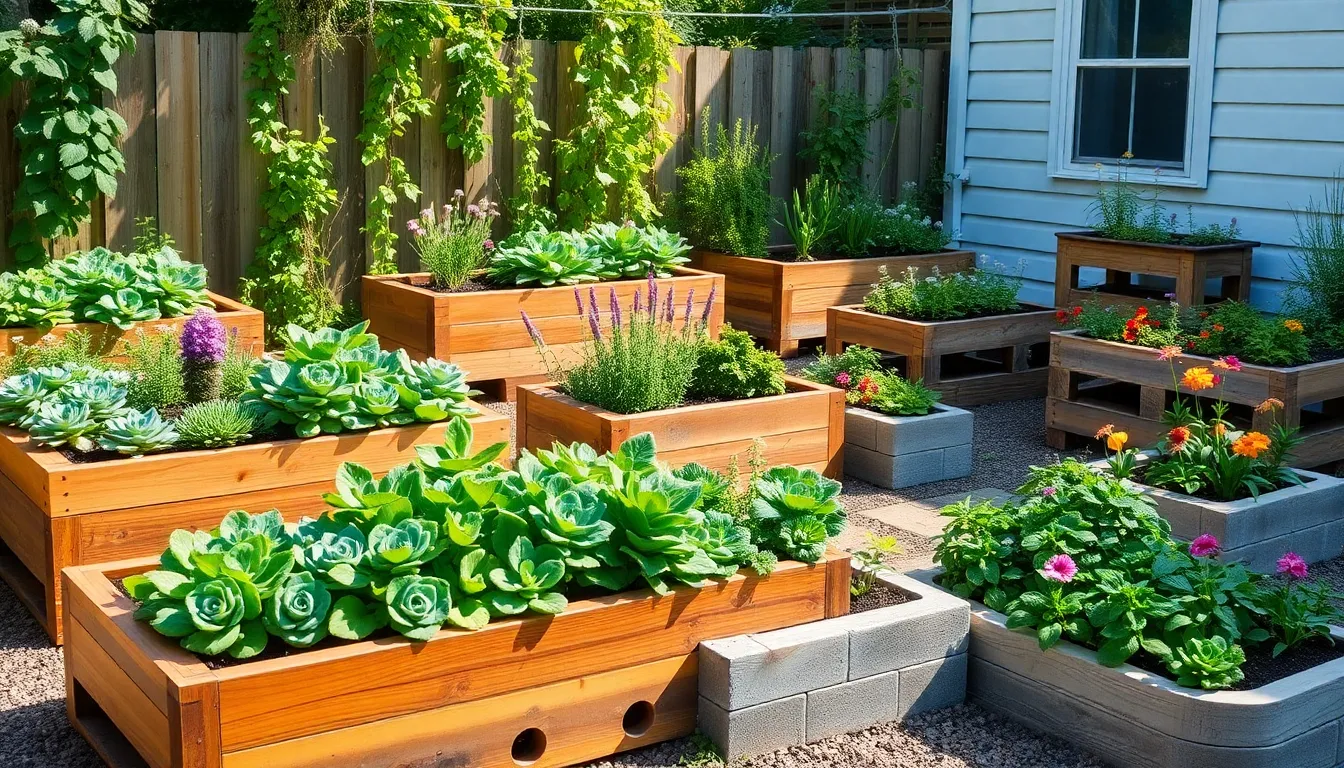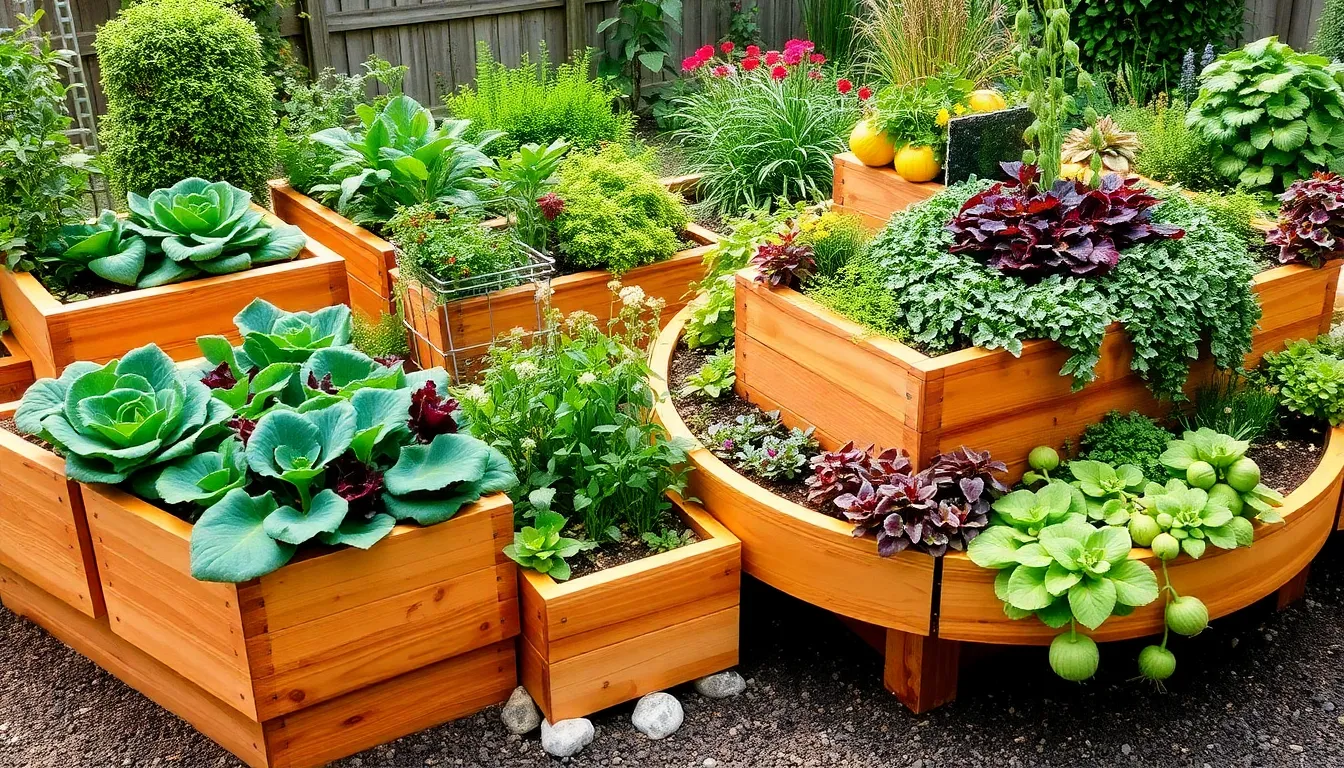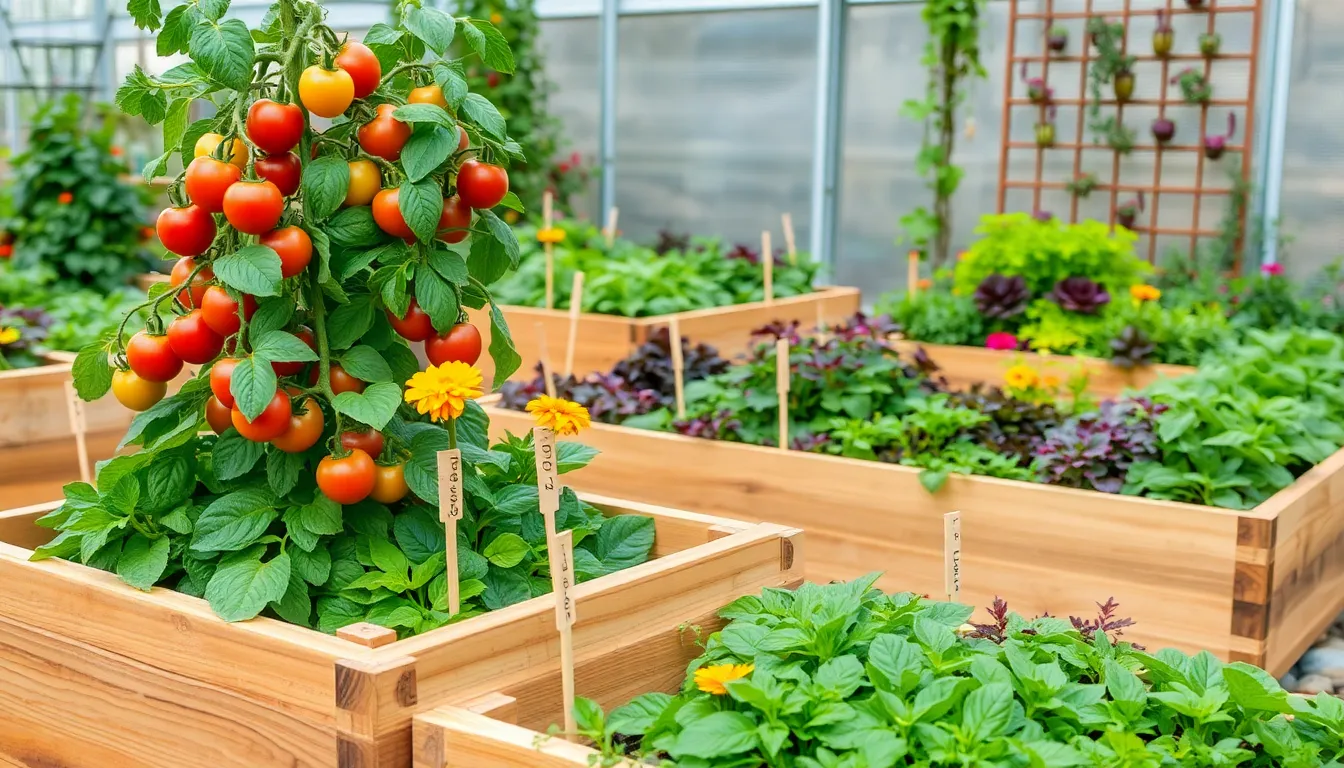Imagine a garden where each plant thrives in its own cozy, elevated sanctuary, free from the constraints of traditional in-ground plots. Raised bed gardening has become an innovative solution for both novice and seasoned gardeners looking to maximize their green spaces, whether it’s a sprawling backyard or a modest balcony. This approach not only elevates the plants but also elevates your gardening game, offering benefits such as improved drainage, better soil control, and easier access for planting and harvesting.
In our exploration of “12 Innovative Raised Bed Garden Plans,” you’ll discover designs that cater to a variety of spaces and styles, each with its own unique twist to inspire your gardening journey. From compact urban setups to expansive backyard installations, these plans promise to unlock new possibilities, allowing you to customize your garden to meet your needs and aesthetic preferences. Whether you’re a beginner eager to get your hands dirty or a seasoned gardener seeking fresh ideas, these plans will provide you with the inspiration and guidance to create a thriving garden oasis.
As we delve into these inventive plans, you’ll learn how to tailor your raised beds for optimal plant health and productivity, ensuring your garden is as fruitful as it is beautiful. With thoughtful insights and practical tips, this guide will empower you to embrace the full potential of raised bed gardening, transforming your outdoor space into a lush haven of growth and serenity. Let us embark on this exciting journey together, where every gardener, regardless of experience, can cultivate their own slice of paradise.
Introduction to Raised Bed Gardening
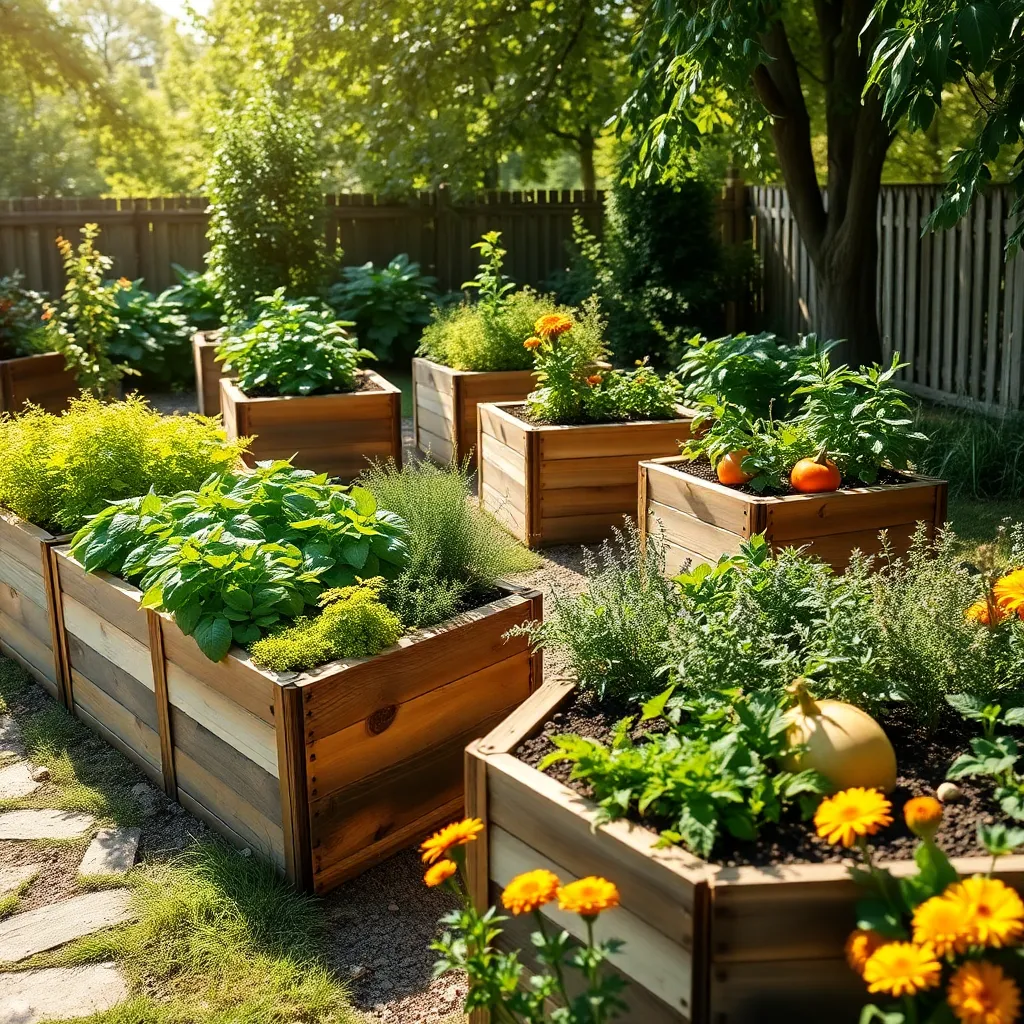
Raised bed gardening is an excellent way to enhance your gardening experience, offering better control over soil quality and drainage. With raised beds, you can create an optimal growing environment that suits a wide variety of plants, from vegetables to ornamental flowers.
Choosing the right location for your raised bed is crucial; aim for a spot that receives at least six to eight hours of sunlight daily. Construct your raised bed using durable materials like untreated wood, stone, or concrete blocks to ensure longevity and sustainability.
When it comes to filling your raised bed, use a high-quality soil mix that consists of equal parts topsoil, compost, and well-draining materials like perlite or coarse sand. This combination provides essential nutrients and maintains soil structure, promoting healthy root development.
Watering your raised bed requires a consistent approach; aim to keep the soil evenly moist but not waterlogged. Installing a drip irrigation system can help achieve this balance, delivering water directly to the plant roots and reducing evaporation.
For those looking to maximize their raised bed’s potential, consider implementing companion planting techniques. Pairing plants with complementary growth habits and nutrient needs can enhance yields and reduce pest issues.
Choosing the Perfect Materials
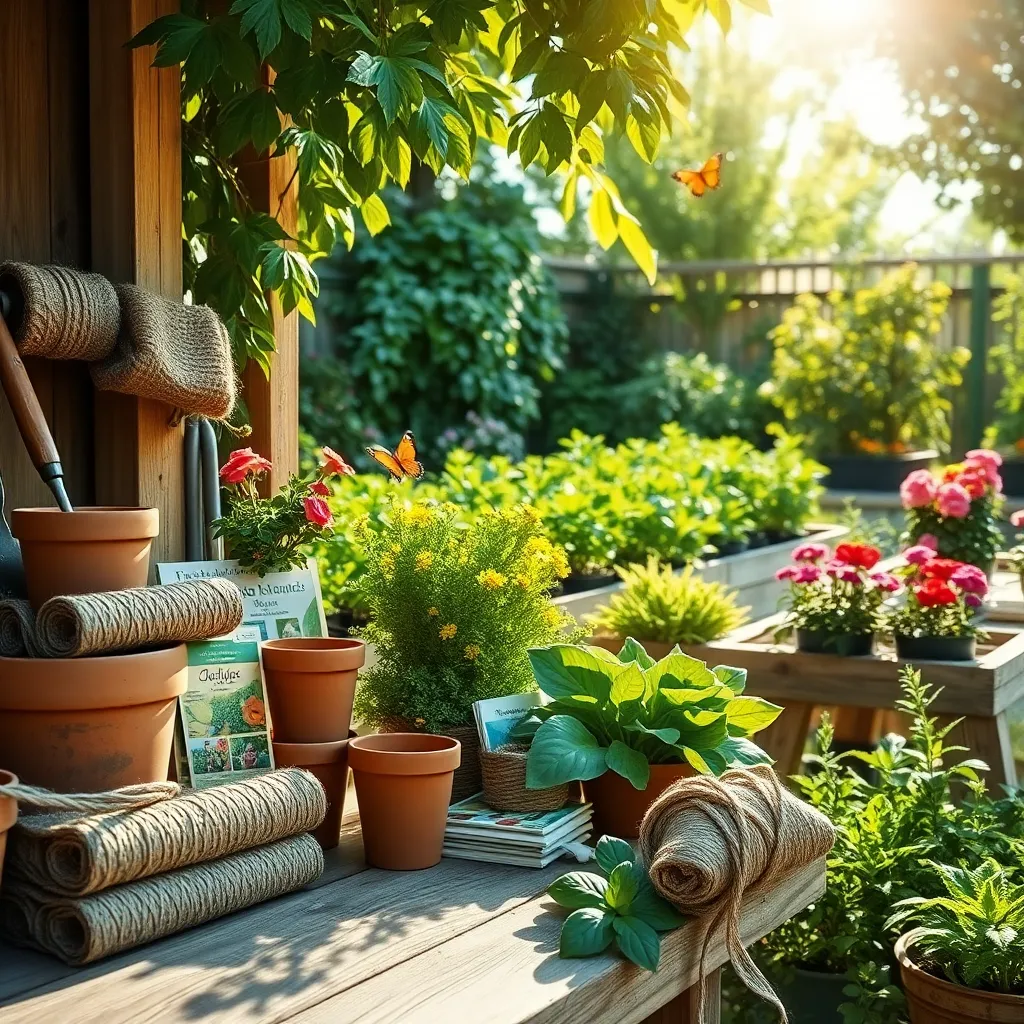
When selecting materials for your raised bed, consider durability and environmental impact. Cedar and redwood are popular choices because they are naturally rot-resistant, ensuring your garden beds last for many years.
Using recycled materials like old bricks or stones can add charm and sustainability to your garden. These materials not only reduce waste but also provide excellent insulation, keeping soil temperatures stable for plant roots.
For those on a budget, untreated pine or spruce can be economical choices, though they may require more frequent replacement. Applying a natural sealant can extend their lifespan, providing a cost-effective solution for many gardeners.
Advanced gardeners might consider using galvanized steel or corrugated metal for a modern look with exceptional longevity. These materials are resistant to rust and can withstand various weather conditions, making them ideal for long-term projects.
Designing Compact Garden Spaces
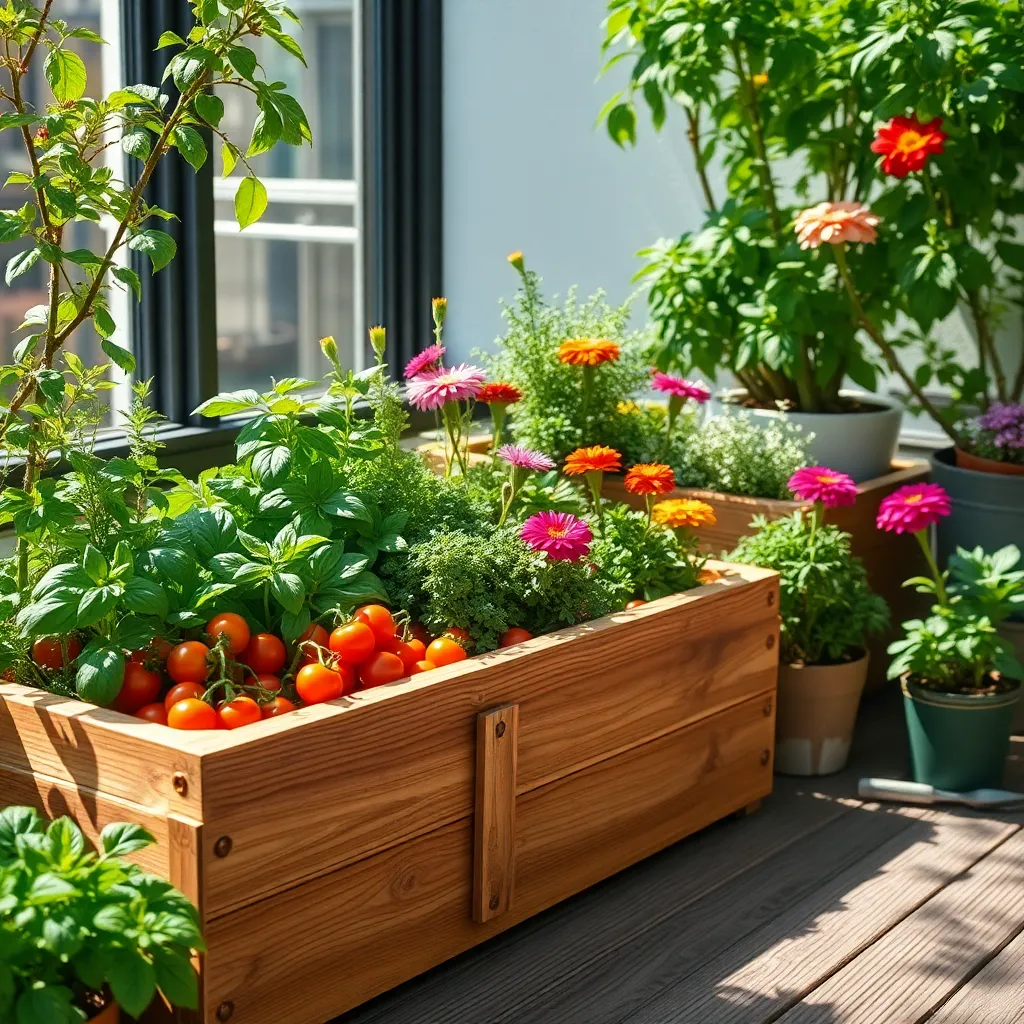
Designing compact garden spaces effectively requires a strategic approach to maximize every square inch. Consider using vertical structures like trellises or wall-mounted planters to grow vine plants such as tomatoes, peas, or beans, which utilize vertical space efficiently.
To add diversity without sacrificing space, mix plants with different growth habits. Incorporate ground covers such as thyme or creeping sedum beneath taller plants to create a lush, layered look while conserving soil moisture and suppressing weeds.
Choosing the right soil is crucial for the success of your compact garden. Use a high-quality, lightweight potting mix enriched with organic matter to ensure adequate drainage and nutrient retention, essential for healthy plant growth.
Watering can be a challenge in small spaces, so consider installing a simple drip irrigation system. This method provides consistent moisture directly to the plant roots, reducing water waste and promoting healthier plants.
For gardeners with more experience, integrating companion planting techniques can enhance growth and deter pests. Planting marigolds near vegetables can help repel nematodes, while basil can improve the flavor and growth of tomatoes when planted nearby.
Incorporating Vertical Gardening Elements
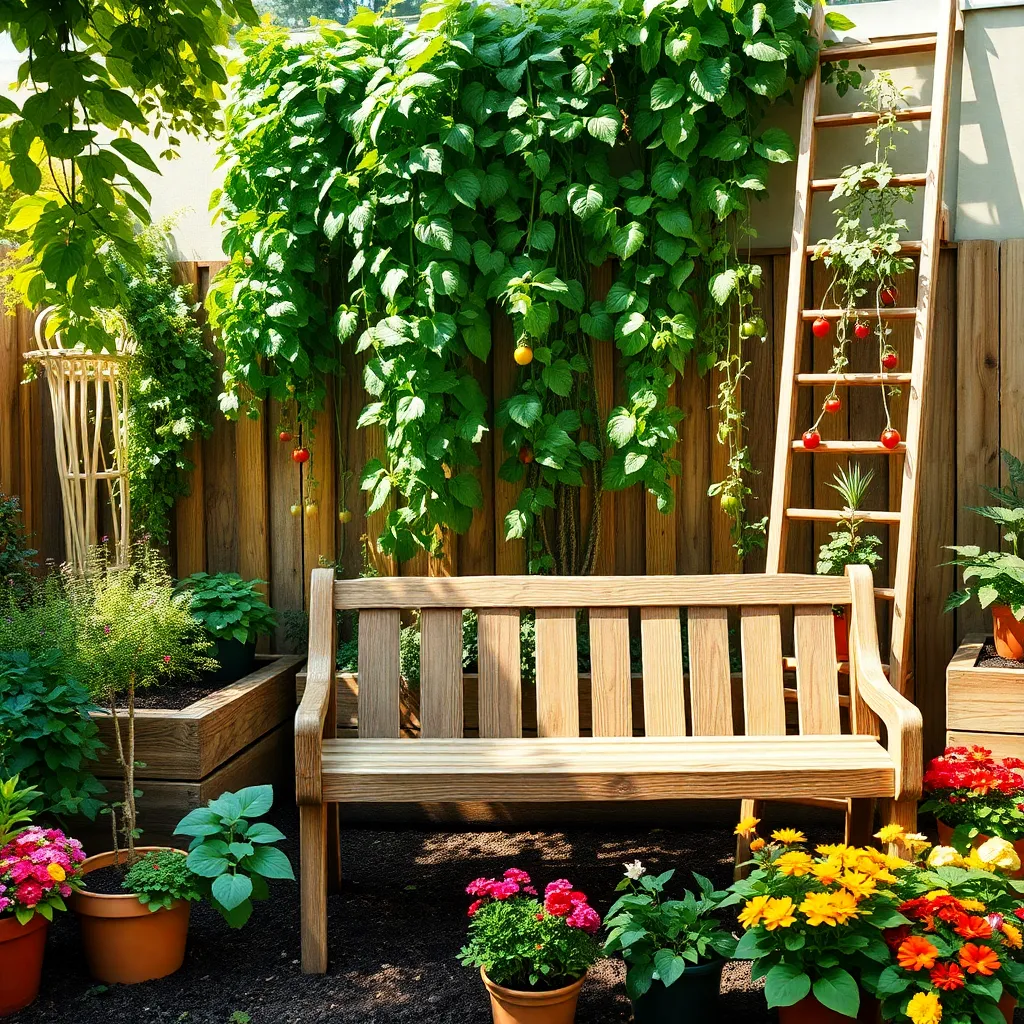
Vertical gardening is a brilliant way to maximize space, especially in raised bed setups. By using trellises, nets, or vertical planters, gardeners can grow more in less area, making it ideal for small gardens or urban spaces.
To start, consider using sturdy materials like metal or bamboo for trellises to ensure they can support the weight of plants like tomatoes or cucumbers. For beginners, peas and beans are excellent choices for vertical growth as they naturally climb and require minimal training.
Advanced gardeners might experiment with espalier techniques, which involve training fruit trees to grow flat against a support structure. This not only saves space but also enhances fruit production by improving sunlight exposure and air circulation.
It’s crucial to select the right soil mix for vertical gardens, ensuring it is lightweight yet rich in nutrients to support upward growth. A mix of compost, peat moss, and perlite can provide the necessary aeration and drainage while retaining moisture for consistent plant health.
Utilizing Companion Planting Strategies
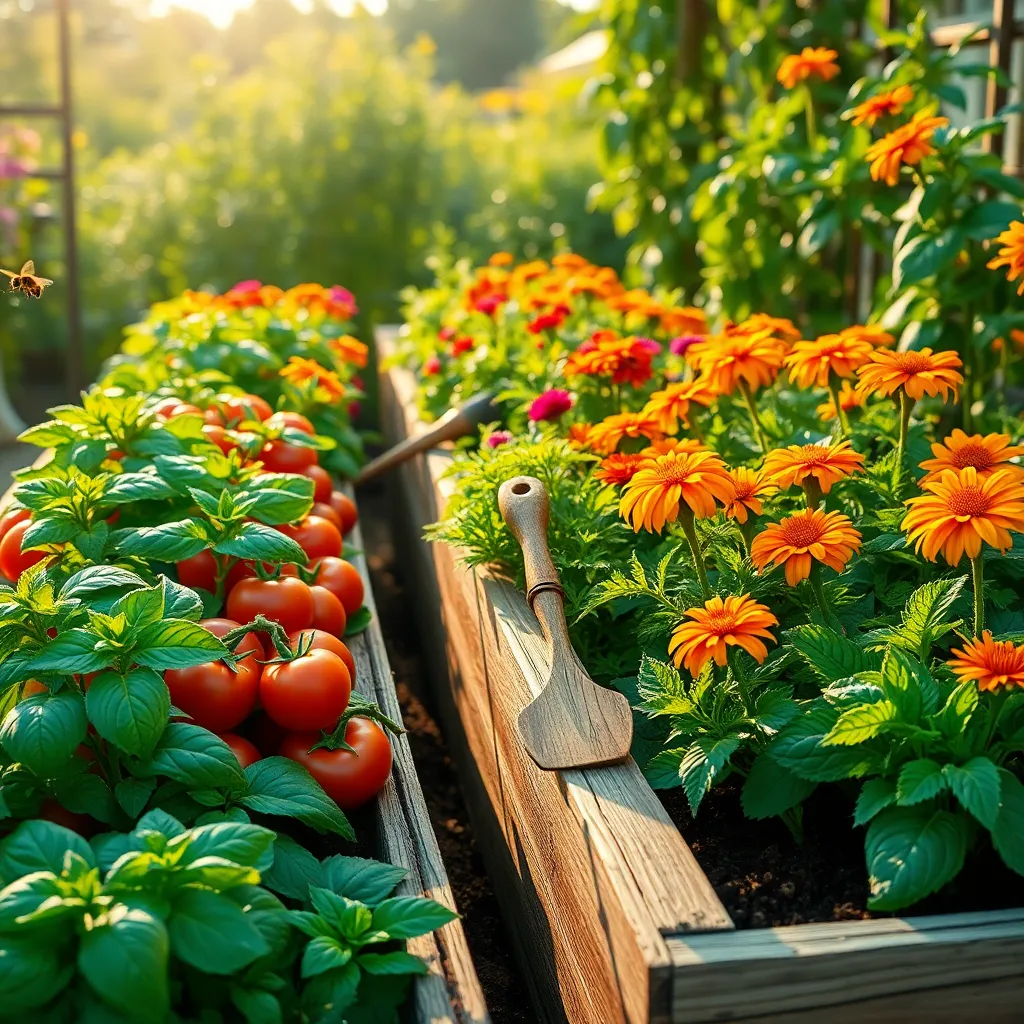
Companion planting is a strategic method where certain plants are grown together to enhance growth and deter pests. For example, planting basil near tomatoes can improve their flavor and help repel insects such as whiteflies and mosquitoes.
Another classic combination is carrots and onions, which help each other thrive by confusing pests with their contrasting scents. This duo benefits from well-drained, loose soil and regular watering, ensuring that neither plant out-competes the other for nutrients.
For beginners, try planting marigolds alongside your vegetables to naturally deter nematodes and aphids. These vibrant flowers thrive in full sun and contribute to a healthy ecosystem by attracting beneficial insects like ladybugs and bees.
Experienced gardeners might explore the beneficial relationship between corn, beans, and squash, known as the “Three Sisters” method. This technique not only optimizes space in raised beds but also enriches the soil as beans fix nitrogen, a nutrient essential for healthy plant growth.
Maximizing Sunlight for Growth

To make the most of sunlight in your raised bed garden, begin by positioning your beds in a north-south orientation. This arrangement ensures that plants receive even sunlight throughout the day, reducing shadows and maximizing growth potential.
Consider the height of your plants when planning your garden layout. Taller plants, such as tomatoes and corn, should be placed on the north side of the bed to prevent them from casting shadows over shorter plants.
For beginners, using reflective mulches can be a simple yet effective technique to boost sunlight exposure. These mulches, often silver or metallic, reflect sunlight back onto the plants, enhancing photosynthesis and potentially increasing yields.
Advanced gardeners might explore the use of movable mirrors to direct sunlight to shaded areas of the garden. By strategically placing mirrors, you can illuminate darker corners of the bed, ensuring every plant gets the sunlight it needs to thrive.
Innovative Watering Systems
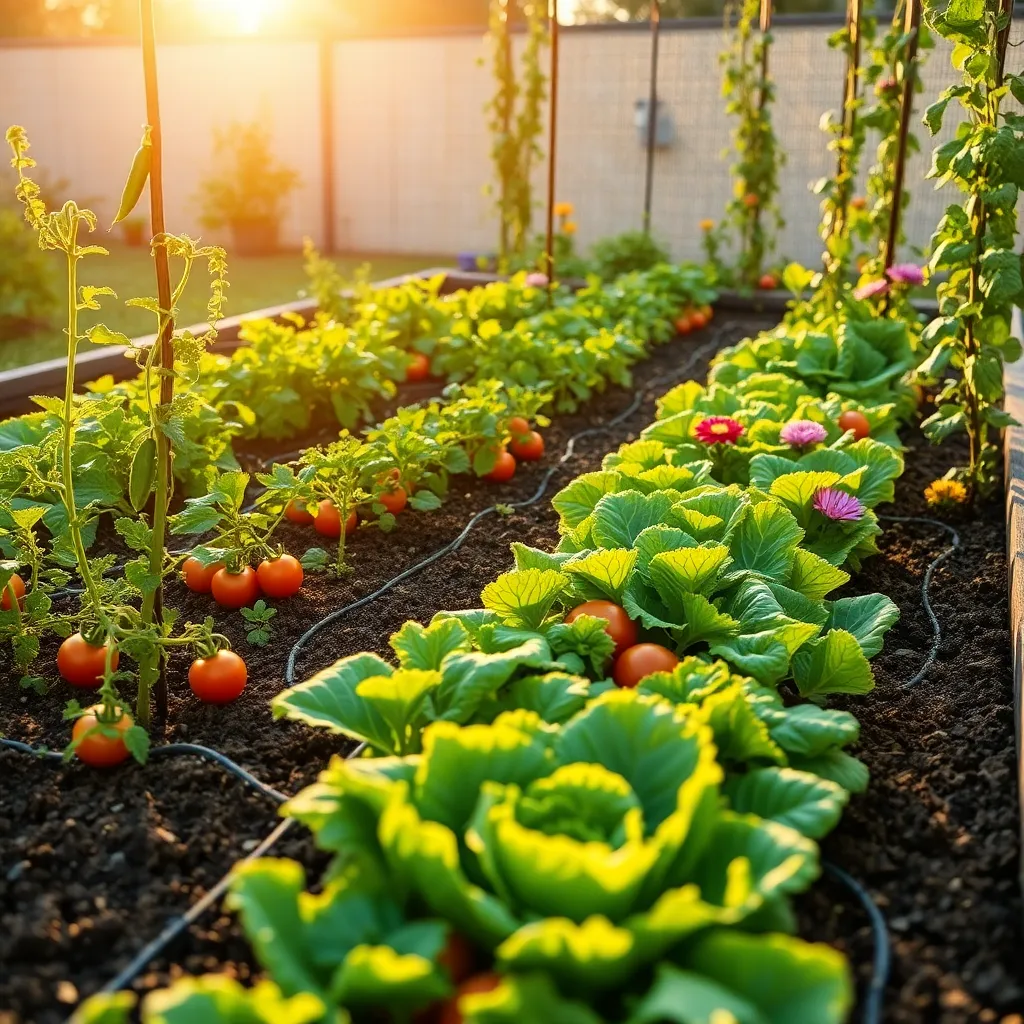
As you design your raised bed garden, consider integrating innovative watering systems to ensure efficient moisture management. Drip irrigation systems are an excellent choice as they deliver water directly to the plant roots, minimizing evaporation and conserving water.
For those just starting, setting up a simple drip system can be as straightforward as using a hose with emitters. More advanced gardeners might explore automated systems that adjust water delivery based on soil moisture levels or weather conditions, providing a more hands-off approach.
Another efficient method to consider is the use of soaker hoses, which are easy to install and perfect for evenly watering longer beds. These hoses allow water to seep slowly into the soil, promoting deep root growth and reducing surface runoff.
If you’re interested in sustainability, consider collecting rainwater in barrels and using it to water your raised beds. This not only reduces your water bill but also provides plants with naturally soft, pH-neutral water, which they tend to prefer over treated tap water.
Building Beds for Accessibility
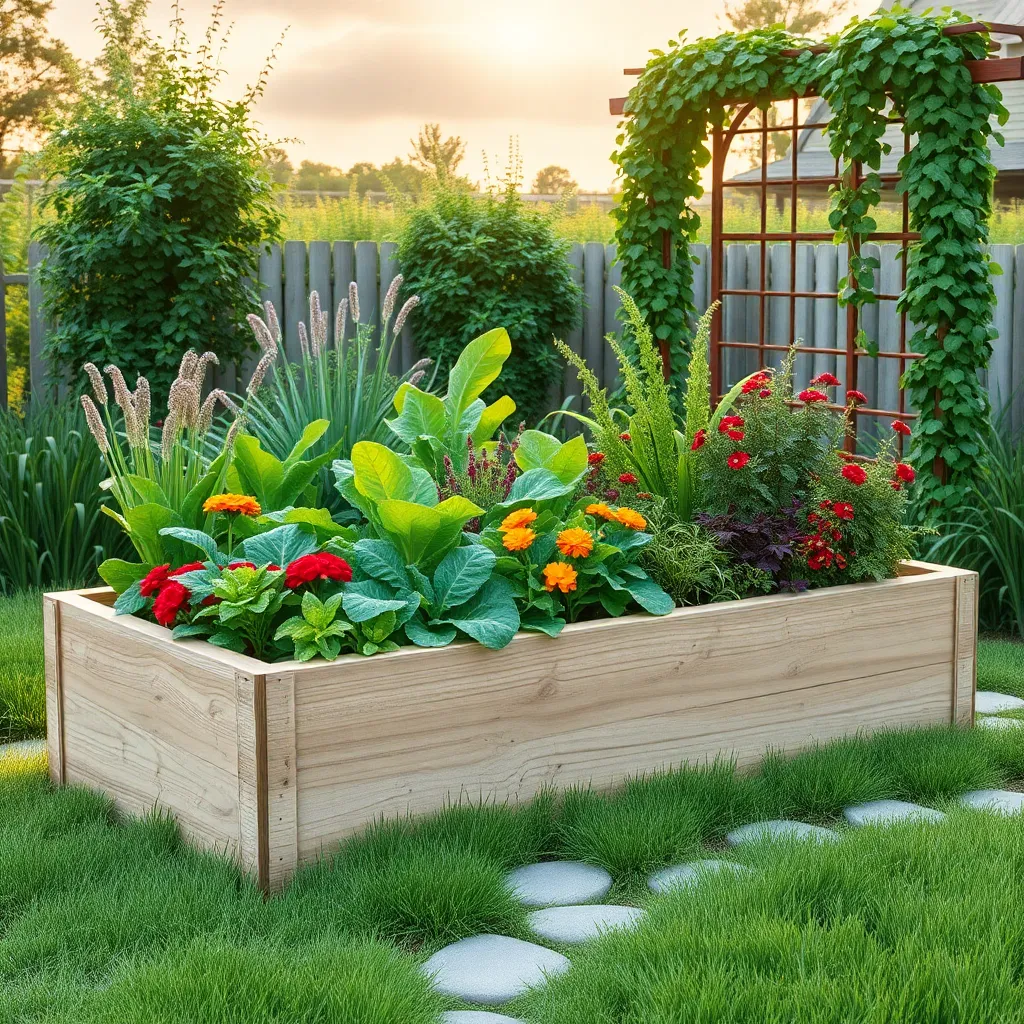
Creating accessible raised beds can greatly enhance the gardening experience for those with limited mobility. By elevating the beds to waist height, gardeners can tend to their plants without bending or kneeling, reducing strain on the body.
Consider building beds that are at least 30 inches in height for optimal accessibility. Using materials like rot-resistant wood or galvanized metal ensures the bed will withstand various weather conditions.
Incorporate wider paths between beds to accommodate wheelchairs or walking aids, ideally no less than 36 inches wide. This not only improves accessibility but also makes it easier to transport gardening tools and supplies.
For beginners, filling the bed with a mix of quality topsoil and compost can provide a nutrient-rich environment for plants. More experienced gardeners might consider adding perlite or vermiculite to improve drainage and aeration in the soil.
Drip irrigation systems can be a practical addition to accessible beds, minimizing the need to carry heavy watering cans. By setting up a timer, you ensure consistent watering, which is crucial for maintaining healthy plant growth.
Integrating Pest Control Measures
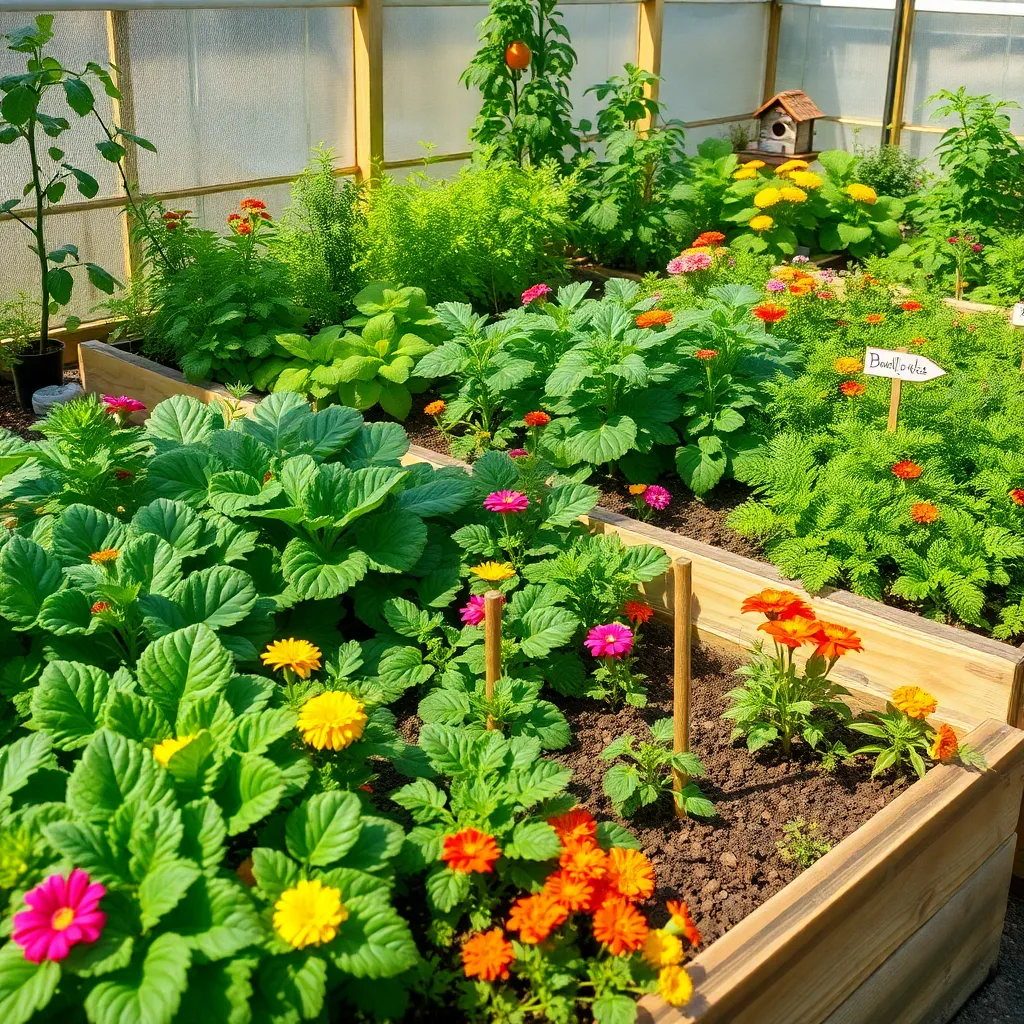
When integrating pest control measures into your raised bed garden, start by understanding the common pests in your area. Identifying these intruders early can help you choose the most effective, natural control methods tailored to your garden’s needs.
One of the simplest ways to deter pests is to plant pest-repelling herbs like basil, mint, or marigolds around your beds. These plants not only add beauty and fragrance but also act as a natural barrier against unwanted insects.
Companion planting is another strategy that can boost your pest control efforts. For example, planting garlic alongside your tomatoes can help ward off aphids and spider mites, creating a symbiotic relationship between the plants.
For more advanced pest management, consider incorporating beneficial insects into your garden ecosystem. Ladybugs and lacewings are natural predators of many harmful pests, offering an organic solution to pest problems without chemicals.
Creating Seasonal Rotation Plans
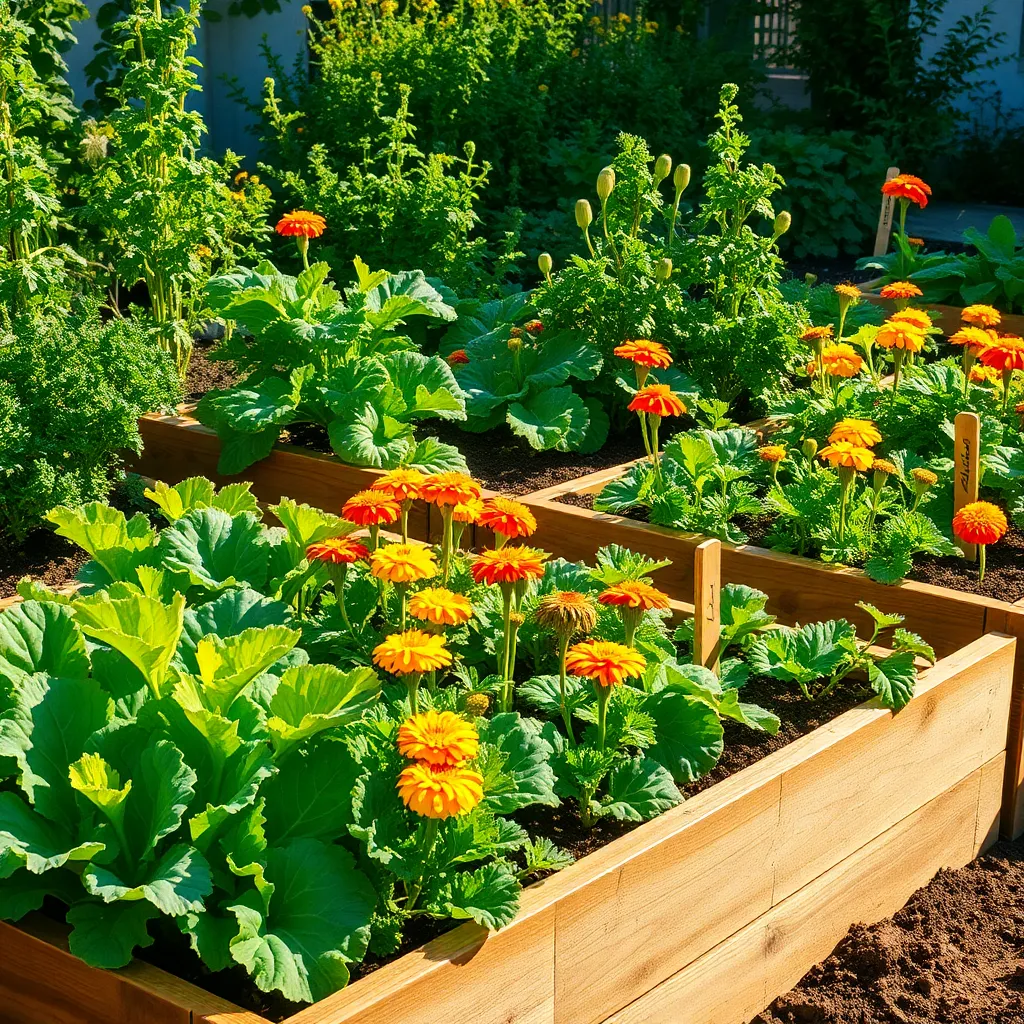
Planning a seasonal rotation for your raised bed garden ensures optimal plant health and maximizes yields. By rotating crops, you reduce the risk of soil depletion and minimize pest and disease issues that can arise when the same plants are grown in the same spot year after year.
To begin, categorize your plants into groups such as leafy greens, root vegetables, fruit-bearing crops, and legumes. This approach helps in rotating different plant families, which is critical for maintaining soil health and nutrient balance.
Next, create a simple plan by sketching your raised bed layout and assigning plant groups to different sections. Ensure that no plant family is grown in the same section consecutively to disrupt pest cycles and allow the soil to recuperate.
Consider the specific needs of each plant type when rotating. For instance, legumes can be planted to enrich the soil with nitrogen, benefiting nitrogen-hungry crops like tomatoes the following season.
For gardeners looking to enhance this rotation strategy, integrate cover crops during off-seasons. Cover crops, such as clover or rye, improve soil structure and fertility, providing a ready bed for the next planting cycle.
Keep in mind that consistent watering and proper soil amendments are vital throughout the rotation process. Regularly test your soil to adjust pH and nutrient levels, ensuring that each crop gets the best possible start.
Enhancing Soil with Amendments
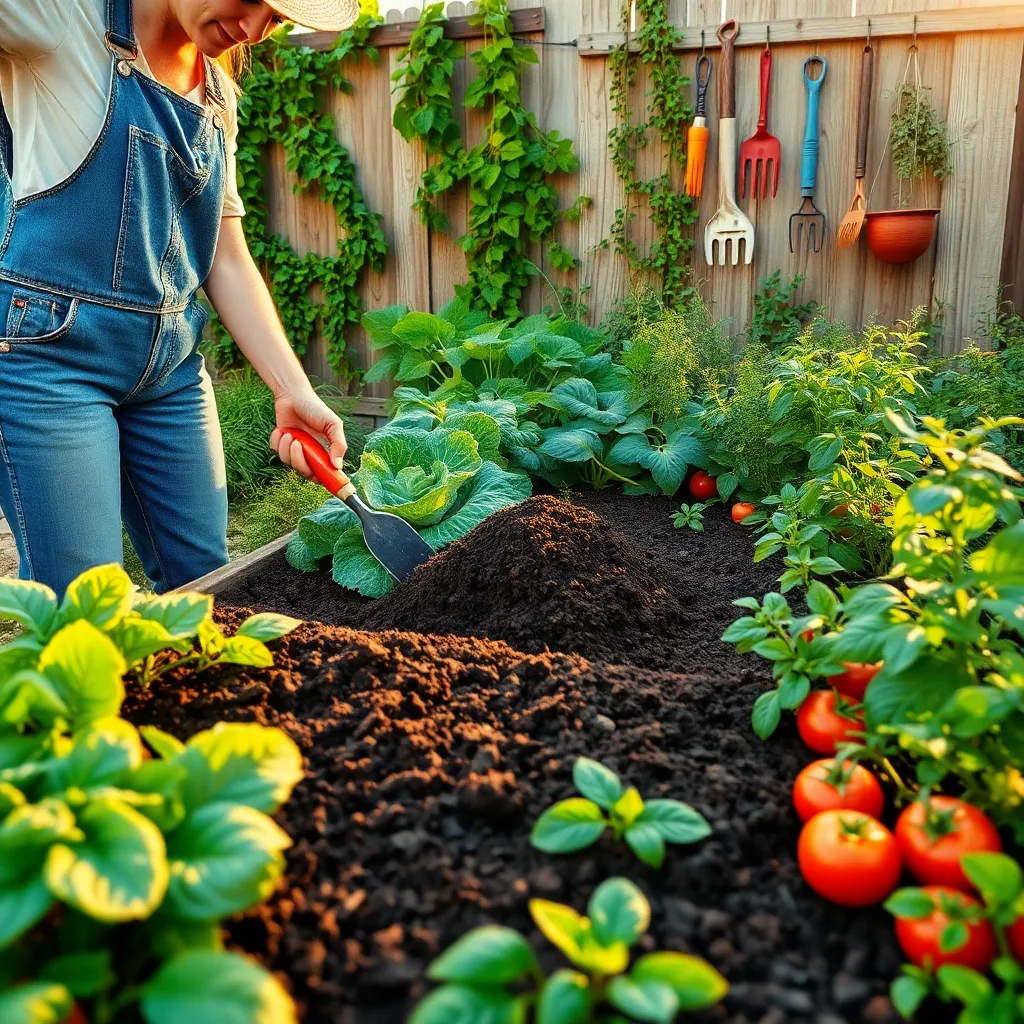
Enhancing soil with amendments is a crucial step in optimizing the productivity of your raised bed garden. Amending your soil helps improve its structure, drainage, and nutrient content, resulting in healthier plants.
Start by assessing the current condition of your soil to determine what amendments might be needed. A simple soil test can reveal deficiencies in nutrients such as nitrogen, phosphorus, and potassium, guiding you in choosing the right amendments.
For beginners, adding organic matter like compost or well-aged manure can make a significant difference. These amendments not only supply essential nutrients but also improve the soil’s ability to retain moisture and support beneficial microbial activity.
Advanced gardeners might consider using specific mineral amendments like rock phosphate or greensand to address particular deficiencies. These materials release nutrients slowly, ensuring a steady supply over time and reducing the risk of over-fertilization.
Creating a balanced soil environment is essential for plant health. Regularly incorporating a mix of amendments can maintain soil fertility, promoting lush, productive growth season after season.
Maintaining Your Raised Bed Garden
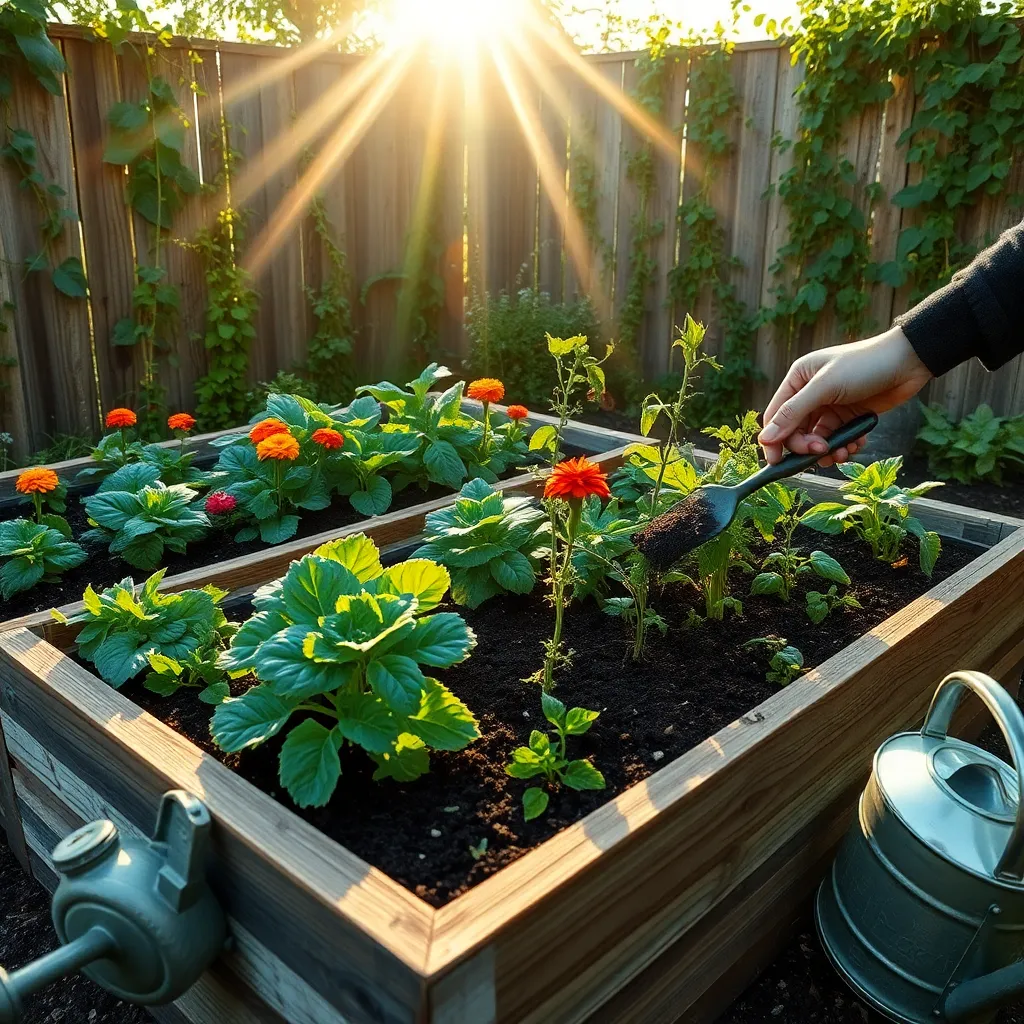
Maintaining your raised bed garden involves regular watering to ensure consistent moisture levels. Water deeply at least once a week and adjust frequency based on your local climate and rainfall patterns.
Mulching is an essential practice to retain soil moisture and suppress weeds. Use organic materials like straw, shredded leaves, or grass clippings to create a 2-3 inch layer on top of the soil.
Pruning and deadheading are vital for encouraging healthy plant growth and prolonging blooming periods. Regularly remove dead or diseased foliage to improve air circulation and prevent pest infestations.
For those looking to optimize plant health, consider rotating crops each season to prevent soil-borne diseases. Implement a simple rotation plan by grouping plants with similar nutrient needs together and changing their position annually.
Advanced gardeners might explore companion planting to enhance growth and deter pests. Pairing plants like basil with tomatoes or marigolds with beans can lead to a more productive and harmonious garden environment.
Conclusion: Growing Success with These Plants
As we journeyed through the ’12 Innovative Raised Bed Garden Plans’ article, we uncovered a treasure trove of relationship insights. These plans serve as metaphors for nurturing relationships: from understanding the foundational importance of communication and trust, embracing adaptability like a modular garden, and recognizing the need for consistent care and attention, akin to seasonal planting. We also explored the art of compromise, the benefits of shared goals, and the strength found in diversity, much like a thriving garden with varied plants.
Now, take the first step toward cultivating your relationship garden. Choose one principle from our discussion that resonates with you and initiate a heartfelt conversation with your partner or loved one today.
To ensure these insights are at your fingertips whenever you need them, bookmark this article. It will be your guide, a friendly reminder of the nurturing steps that can transform your relationship into a flourishing garden.
As you plant these seeds of understanding and dedication, envision a future where your relationships are not only resilient but also bloom with joy and connection. Remember, every great relationship is grown with intention and care. Save this guide, and let it inspire you to cultivate a love that thrives.

